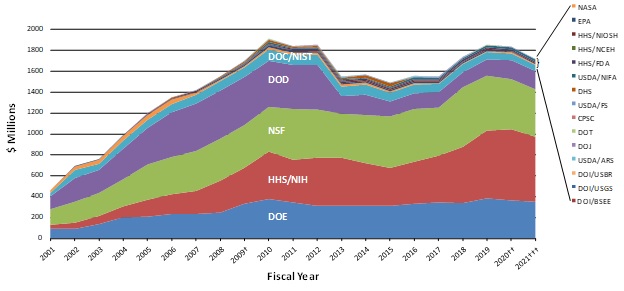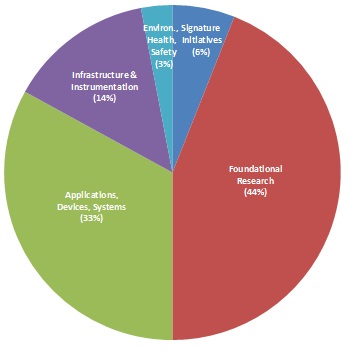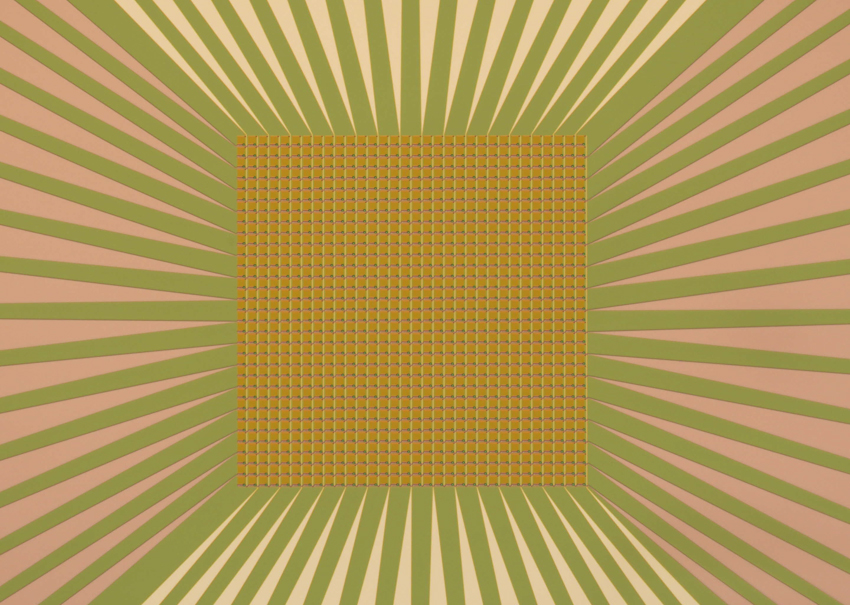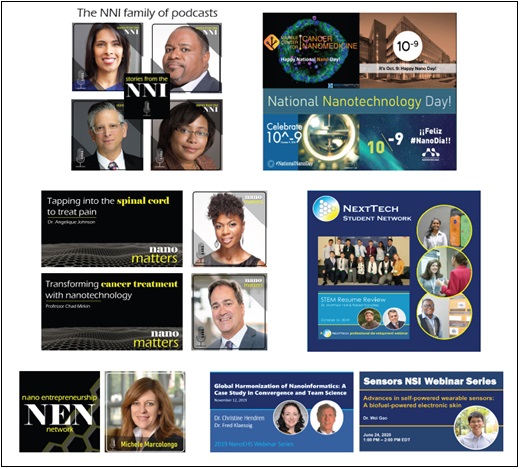NNI Supplement to the President’s 2021 Budget
This document is a supplement to the President’s 2021 Budget request and serves as the Annual Report for the National Nanotechnology Initiative (NNI), called for under the provisions of the 21st Century Nanotechnology Research and Development Act (15 USC §7501). The report also addresses the requirement for Department of Defense reporting on its nanotechnology investments, per 10 USC §2358.

The President’s 2021 Budget requests over $1.7 billion for the NNI, with an increased investment in the foundational research that will lead to discoveries that will advance a wide range of areas including key Industries of the Future. Cumulatively totaling over $31 billion (including the 2021 request), this support reflects the continued importance of research to understand matter at the nanoscale and to translate this knowledge into technological breakthroughs that benefit the American people.

The President’s 2021 Budget supports nanoscale science, engineering, and technology R&D at 11 agencies. See the graph above for funding trends since the inception of the NNI. The NNI Supplement to the President’s 2021 Budget documents progress of the NNI participating agencies in addressing the goals and objectives of the NNI. As called for in the 21st Century Nanotechnology Research and Development Act, NNI investments are categorized by Program Component Area (PCA). The PCA breakdown for the 2021 Budget can be seen in the pie chart on the left.

About the back cover image (above)
Each year’s NNI Supplement to the President’s Budget features cover images illustrating recent developments in nanotechnology stemming from NNI activities that have the potential to make major contributions to National priorities.
The image on this year’s back cover is a micrograph a 1024-element (32 x 32) near-infrared imaging array of superconducting nanowire single photon detectors (SNSPDs) developed by researchers at NIST and NASA’s Jet Propulsion Laboratory, with funding from NASA and DARPA. The array has an active area of 0.96 x 0.96 mm, making it the largest SNSPD array reported to date, in terms of both active area and pixel count. Applications for large SNSPD arrays include imaging, spectroscopy, or particle detection. For example, the array could be used in future space-based telescopes to search for chemical signs of life on other planets, or to search for dark matter. The 32-by-32 detector array is surrounded by pink and gold wires connecting to electronics that compile the data. For technical details, see: Optics Express 27, 35279 (2019) (https://doi.org/10.1364/OE.27.035279). Image credit: V. Verma/NIST.

About the inside back cover (above)
Images illustrate examples of NNI outreach activities. The NNI promotes public outreach to students, teachers, the general public, and the NNI community through:
Left – The NNI family of podcasts (nano.gov/podcasts)
- Stories from the NNI – experts share their perspectives on advances that have been made and future prospects of nanotechnology.
- Nano Matters – explores specific examples of nanotechnology and how it impacts everyday life.
- Nano Entrepreneurship Network (NEN) – brings new and seasoned entrepreneurs together with the people and resources available to support them and highlights best practices, resources, and advice from entrepreneurs.
Right
- National Nanotechnology Day on October 9 (nano.gov/nationalnanotechnologyday).
- NextTech Student Network (nexttechnetwork.org).
- Webinars to share information with the general public and the nanotechnology research and development community (nano.gov/PublicWebinars).
An annex to the budget supplement report summarizing each agency’s interests and activities related to nanotechnology is here.
Additional agency highlights can be found here.




